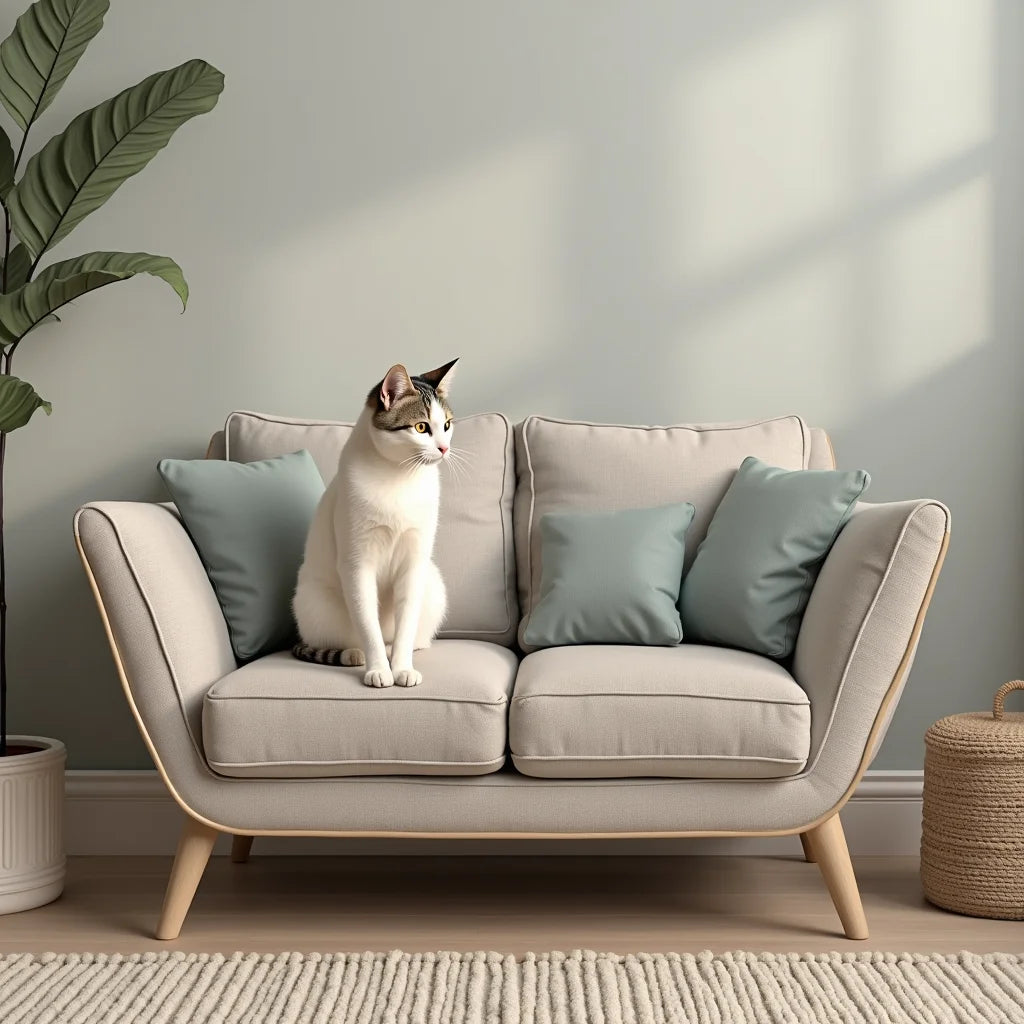
Questions to Ask Before Choosing Designer Cat Furniture
Updated on: 2025-10-27
- Why designer cat furniture elevates homes and happy cats
- Myths vs. facts about designer cat furniture
- Step-by-step guide to choosing designer cat furniture
- Frequently asked questions about designer cat furniture
- Summary and key takeaways for choosing designer cat furniture
Why designer cat furniture elevates homes and happy cats
Designer cat furniture gives you the perfect balance of style, durability, and comfort for your cat. If you’ve ever hidden a fraying post in the corner, you’ll appreciate how a thoughtful piece can actually enhance your space. From luxury cat furniture with clean lines to high-end cat furniture that uses premium woods and upholstery, these designs make daily cat routines—scratching, climbing, and napping—look good and last longer. Better yet, the right designer cat furniture fits small spaces without feeling cramped, especially when you pick a slim cat tree or a compact cat condo with built-in scratching posts.
Beyond the aesthetics, it’s a quality-of-life upgrade. Cats need vertical territory and safe, sturdy surfaces to scratch. By investing in designer pieces built with cat-safe materials and smart engineering, you cut down on wobble, reduce mess, and keep your sofa safe. If you live in a small apartment, you can still create a rich environment with vertical perches, narrow footprints, and wall-mounted shelves—without sacrificing your interior style.
Myths vs. facts about designer cat furniture
-
Myth: Designer cat furniture is only about looks.
Fact: High-end cat furniture is engineered for stability, longevity, and feline behavior. The best designs balance heavy bases, secure mounts, and durable scratching surfaces with a refined aesthetic. -
Myth: Cats won’t use luxury cat furniture.
Fact: Cats gravitate to sturdy, comfortable, and elevated spots. When you choose the right dimensions and textures, your cat tree or condo becomes a favorite hangout. -
Myth: Designer pieces don’t fit small apartments.
Fact: Designer cat furniture for small apartments often uses vertical space, modular builds, and wall mounting to keep floors open while giving your cat height and variety. -
Myth: Handmade designer cat furniture with scratching posts is high-maintenance.
Fact: Many handmade options use replaceable sisal sleeves, washable cushion covers, and sealed wood, which actually simplifies upkeep over time. -
Myth: Only huge cat trees are stable.
Fact: Stability comes from design and materials: wide bases, quality fasteners, smart wall anchors, and balanced geometry. A compact tree can be rock-solid when built well.
Step-by-step guide to choosing designer cat furniture
This short plan helps you find the right designer cat furniture, whether you want a minimalist cat tree, a sleek cat condo, or a wall-mounted system that saves floor space.
Step 1: Measure your space and ceiling height
Grab a tape measure and note the width, depth, and height of the spot you have in mind. Leave clearance for walkways and doors. If you’re eyeing a tall piece, measure your ceiling and any crown molding. Even a few inches make a difference for tension-mounted posts or wall units.
Step 2: Observe your cat’s habits
Watch where your cat naps, scratches, and surveys the room. Tree-loving climbers prefer tall perches and ramps, while loafers enjoy enclosed cubbies and cushioned hammocks. If your cat is a serious scratcher, prioritize robust, replaceable posts.
Step 3: Choose durable, cat-safe materials
Look for hardwood or engineered wood with low-emission finishes, thick sisal or jute for scratching, and upholstery that resists snags and fur. If allergies are a concern, consider sealed wood and removable, washable cushions. Premium materials in high-end cat furniture mean fewer replacements and better long-term value.
Step 4: Prioritize stability and weight support
Check the base width, wall anchors, and hardware. For multi-cat homes or larger breeds, the structure should support weight without flexing. If you’re mounting shelves, use studs or heavy-duty anchors rated for more than your cat’s weight—and then some.
Step 5: Consider modular or wall-mounted options
Designer cat furniture for small apartments shines when it’s modular. A compact base with add-on platforms or wall-mounted perches lets you scale up without cluttering your floor. You can even span a hallway with shelves to create a cat highway that doubles as decor.
Step 6: Match the style to your home
Choose finishes that echo your furniture—walnut or oak for warm interiors, matte black for modern minimalism, or light woods for airy spaces. A cohesive look helps your cat furniture feel “built-in” rather than temporary.
Step 7: Plan for upkeep and replacements
Confirm that scratching posts are replaceable and fabrics are removable or spot-cleanable. Keep a small kit with an Allen key, extra screws, and furniture pads. A little maintenance keeps your investment looking fresh and safe.
Frequently asked questions about designer cat furniture
What is the best designer cat furniture for small spaces?
If floor space is tight, look for tall, narrow cat trees with a heavy base, or a wall-mounted system that stacks perches vertically. A slim cat condo with a hideaway cubby and a top perch adds variety without crowding your room. Handmade designer cat furniture with scratching posts offers replaceable parts, which is great when you’re relying on one compact piece to do it all.
Where can I buy stylish designer cat furniture online?
You can explore curated options directly on the brand’s site. Browse modern silhouettes, premium woods, and modular sets that work in small apartments. For inspiration and current offerings, start with the homepage at The Meowhaus, check out the Cat Trees and Cat Condos collections, and read details on the FAQ page to compare materials, care, and sizing.
How do I introduce a new cat tree or condo to a cautious cat?
Set the piece in a calm area near your cat’s usual routes. Sprinkle a little catnip, add a favorite blanket, and reward exploration with treats. Keep it steady (no wobble), and avoid forcing your cat onto higher levels. Most cats warm up when they realize it’s sturdy, safe, and comfy.
Summary and key takeaways for choosing designer cat furniture
Designer cat furniture blends everyday function with a look you’ll love. It supports healthy cat behavior—scratching, climbing, perching—without compromising your decor. Whether you’re upgrading to luxury cat furniture or adding a single high-end cat furniture piece to a small apartment, focus on the essentials: stability, safe materials, and the right footprint. Compact cat trees and slim cat condos can be powerful space-savers, and wall-mounted systems turn vertical space into a playground. When in doubt, measure twice, choose replaceable components, and match the finish to your home.
Key points to remember:
- Start with your cat’s habits—climbers need height; snugglers love enclosed spaces.
- Stability is non-negotiable: wide bases, strong anchors, and quality hardware.
- Premium materials last longer and look better, making designer pieces a smart long-term choice.
- For small apartments, think vertical: modular shelves and narrow trees open up your floor.
- Look for replaceable scratching posts and easy-clean fabrics to simplify upkeep.
When you choose intentionally, designer cat furniture becomes a seamless part of your home—beautiful, practical, and cat-approved.

Sage is a design-obsessed cat parent focused on turning “pet gear” into purposeful décor. At MeowHaus, Sage covers styling guides, enrichment setups, and buyer’s tips to help you ditch carpet towers for furniture-grade pieces. Off the blog, you’ll find Sage scouting textures, testing scratchables, and sipping espresso under a sun-soaked window ledge.
